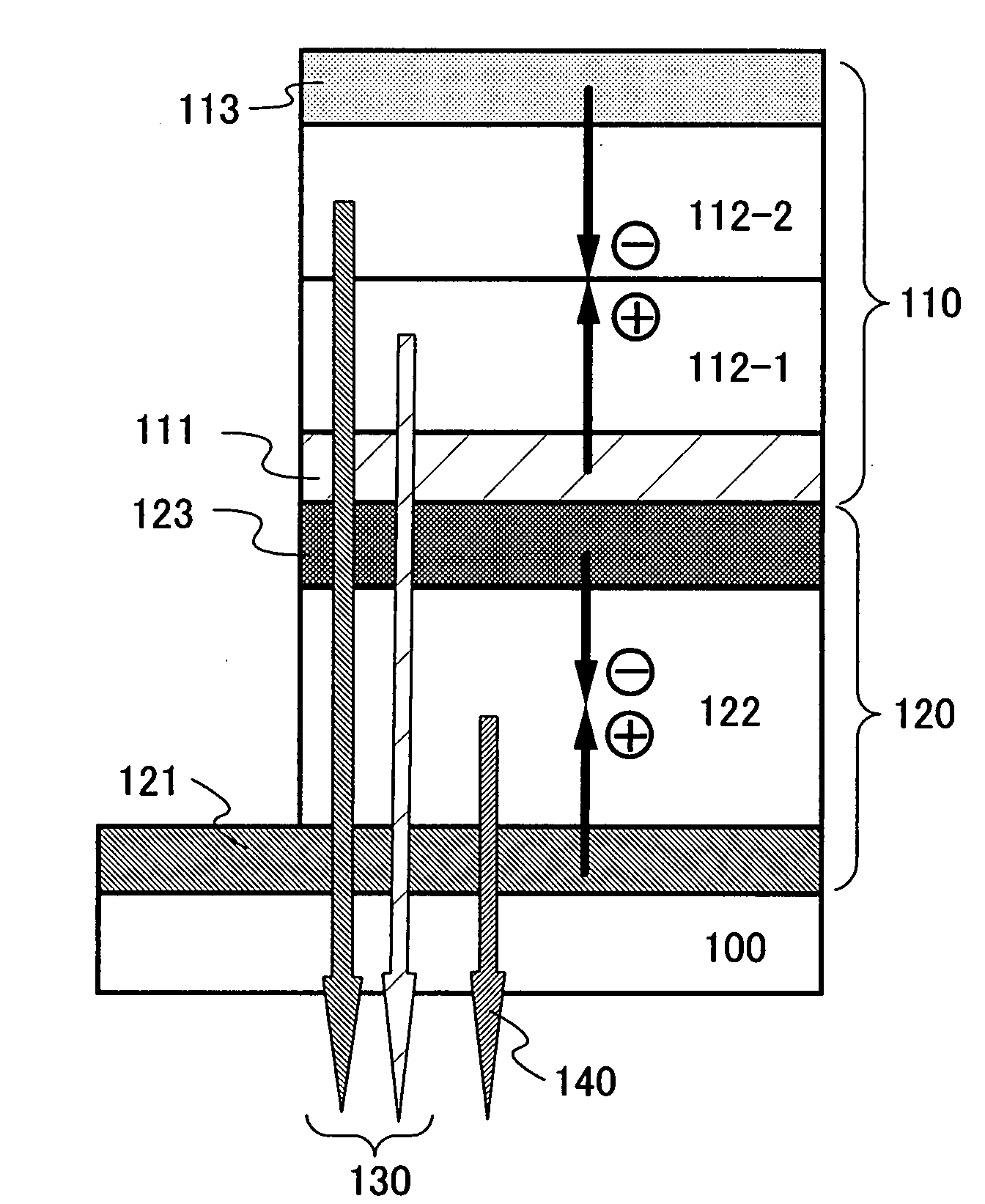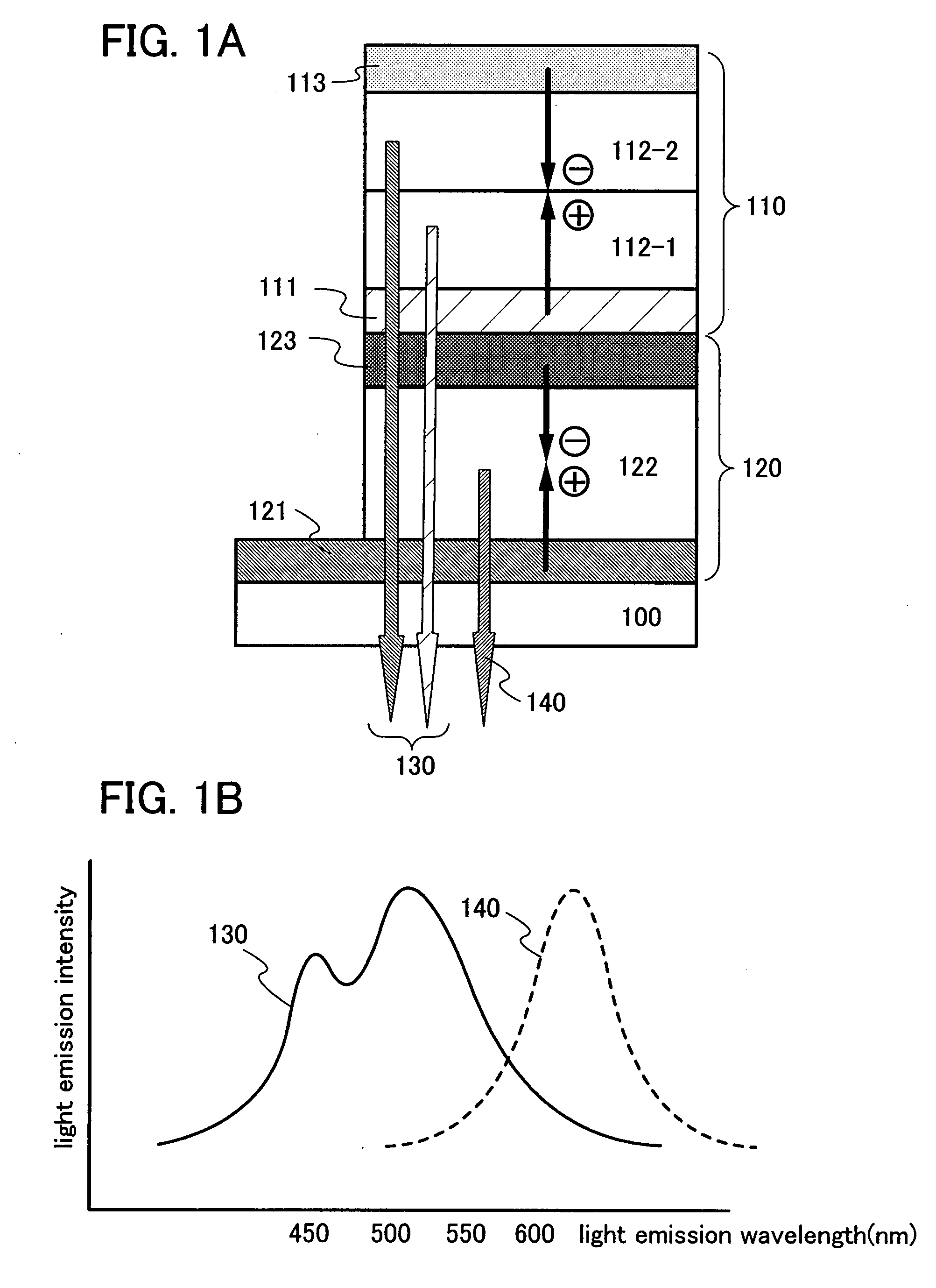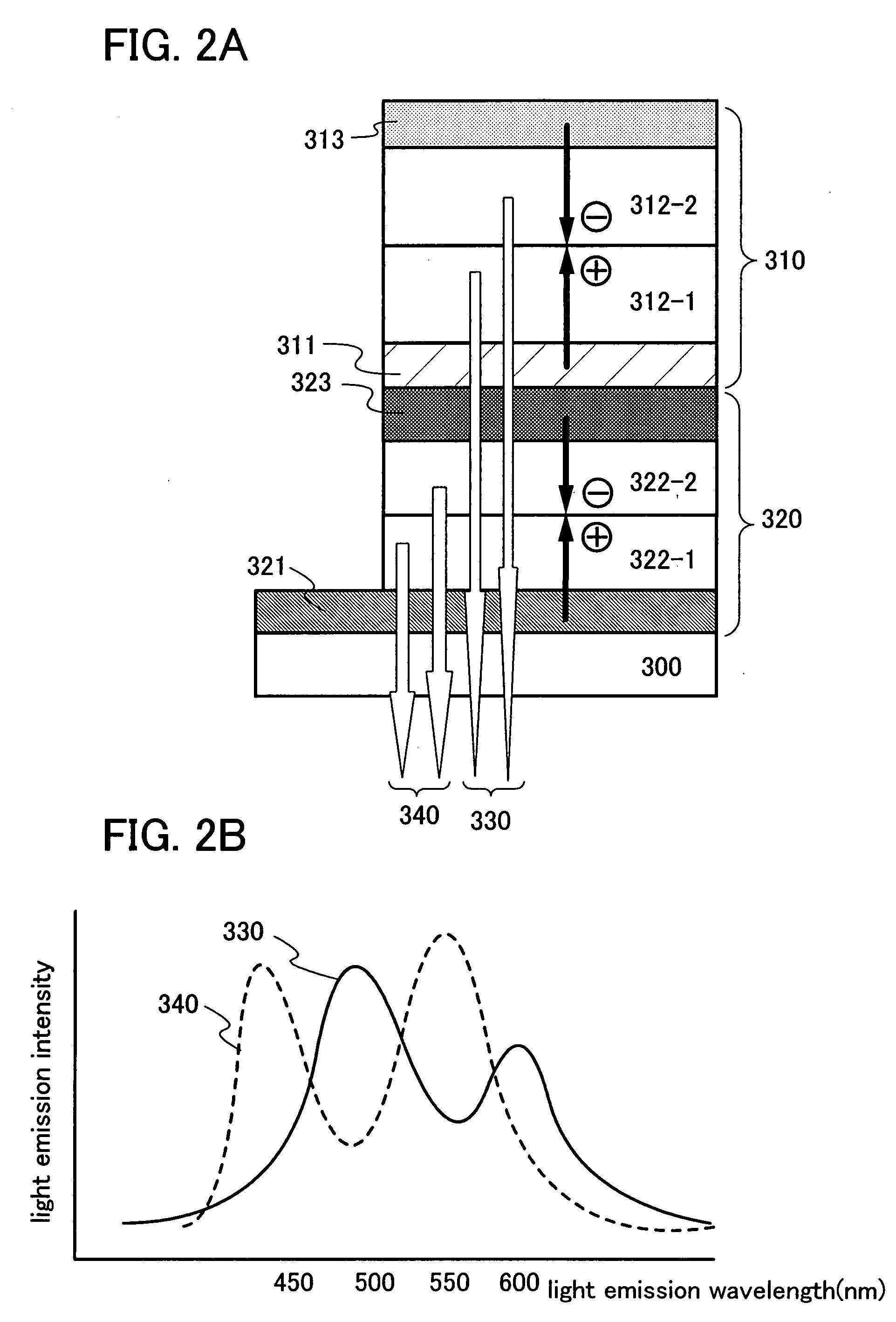Light-emitting element and light-emitting device employing the same
- Summary
- Abstract
- Description
- Claims
- Application Information
AI Technical Summary
Benefits of technology
Problems solved by technology
Method used
Image
Examples
embodiment mode 1
[0054]First, an example of a structure of stacked light-emitting elements will be described, with reference to FIG. 1A. A second light-emitting element 110 and a first light-emitting element 120 are stacked in series over a substrate 100. The first light-emitting element 120 has a structure which includes a first light-emitting layer 122 which is interposed between a first anode 121 and a first cathode 123.
[0055]Further, the second light-emitting element 110 has a structure which includes a second light-emitting layer 112-1 and a third light-emitting layer 112-2 which are interposed between a second anode 111 and a second cathode 113. The second light-emitting layer 112-1, the third light-emitting layer 112-2, and the first light-emitting layer 122 each include a light-emitting organic compound.
[0056]A light-emitting layer formed from a stack which includes the second light-emitting layer 112-1 and the third light-emitting layer 112-2 exhibits a light emission spectrum having two pe...
embodiment mode 2
[0071]An element structure is shown in FIG. 2A. FIG. 2A is a structural example of a light-emitting element of the invention, in which a first light-emitting element 320 and a second light-emitting element 310 are stacked in series over a substrate 300. The first light-emitting element 320 has a structure which includes a first light-emitting layer 322-1 and a second light-emitting layer 322-2 which are interposed between a first anode 321 and a first cathode 323. Further, the second light-emitting element 310 has a structure which includes a third light-emitting layer 312-1 and a fourth light-emitting layer 312-2 which are interposed between a second anode 311 and a second cathode 313.
[0072]Here, a light-emitting layer of the first light-emitting element includes the first light-emitting layer 322-1 which exhibits a light emission spectrum having a peak in the orange to red wavelength range, and the second light-emitting layer 322-2 which exhibits a light emission spectrum having a...
embodiment mode 3
[0081]Below, materials and element structures which can be used for structures of light-emitting elements of the invention; that is, the first light-emitting element 120 and the second light-emitting element 110 in FIG. 1A, and the first light-emitting element 320 and the second light-emitting element 310 in FIG. 2A; will be described. In the structure in FIG. 1A, a hole injecting layer and / or a hole transporting layer may be provided between the second anode 111 and the second light-emitting layer 112-1 and between the first anode 121 and the first light-emitting layer 122. Further, in the structure in FIG. 1A, an electron injecting layer and / or an electron transporting layer may be provided between the second cathode 113 and the third light-emitting layer 112-2 and between the first cathode 123 and the first light-emitting layer 122. In the structure in FIG. 2A, a hole injecting layer and / or a hole transporting layer may be provided between the second anode 311 and the third light...
PUM
 Login to View More
Login to View More Abstract
Description
Claims
Application Information
 Login to View More
Login to View More - R&D
- Intellectual Property
- Life Sciences
- Materials
- Tech Scout
- Unparalleled Data Quality
- Higher Quality Content
- 60% Fewer Hallucinations
Browse by: Latest US Patents, China's latest patents, Technical Efficacy Thesaurus, Application Domain, Technology Topic, Popular Technical Reports.
© 2025 PatSnap. All rights reserved.Legal|Privacy policy|Modern Slavery Act Transparency Statement|Sitemap|About US| Contact US: help@patsnap.com



